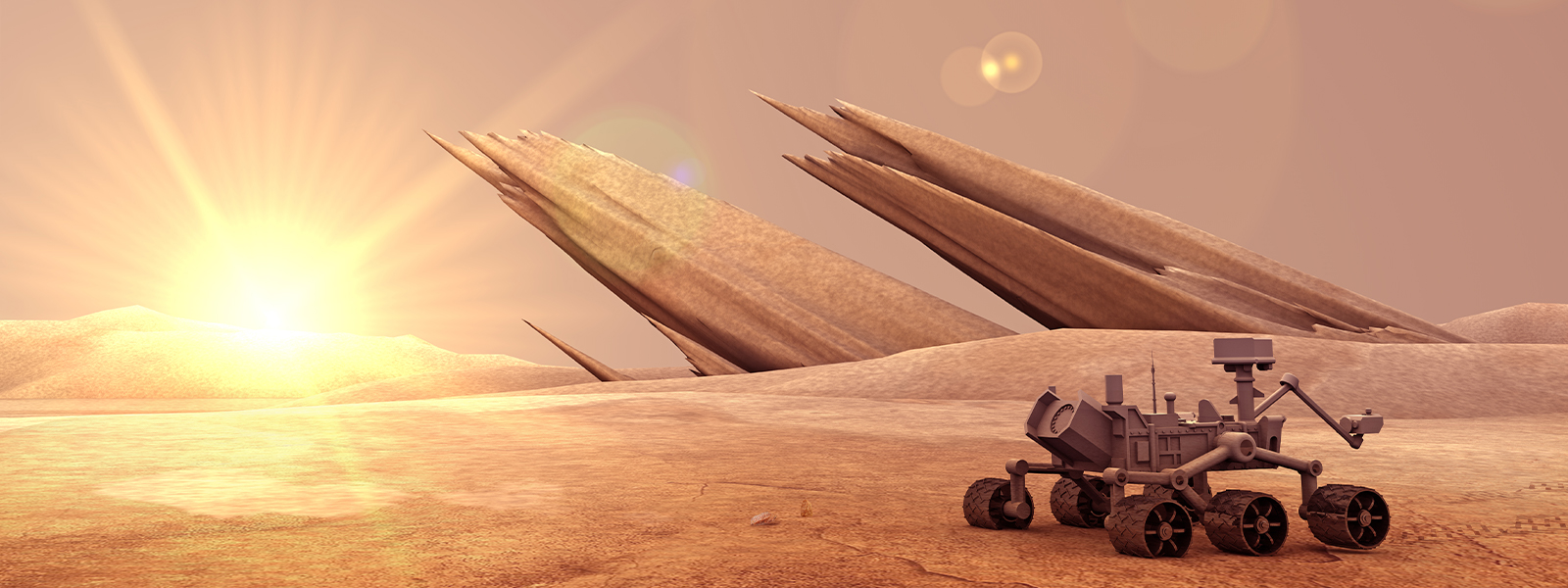NASA has sent several rovers to the surface of Mars. These rovers have been able to perform scientific research on Mars for years, thanks to their use of a reliable and renewable source of energy: solar power.
Some rovers also use nuclear power when their missions require them to explore dark and dusty locations where sunlight isn’t available, but solar has powered the Insight lander along with the Spirit and Opportunity rovers. Notably, NASA also chose solar to power the first flying rover on Mars, the Ingenuity helicopter, and it has just recently flown several successful test flights.
Let’s take a quick look at the history of solar-powered rovers on Mars.
Sojourner: The first solar-powered Mars rover
Soujourner landed on Mars on the fourth of July, 1997. It was expected to function for only a week, but Soujourner lasted a lot longer than that! The rover kept moving for a full 85 days. Its solar array was able to generate about 140 watts of power when fully illuminated. But just like Earth, Mars has seasons, and seasonal change plus dust ultimately reduced the rover’s power supply to 50 watts. Based on the experience of this rover, NASA learned that more power would be needed in future missions.
Triple-junction gallium arsenide solar panels
Additional power was found by using triple-junction gallium arsenide solar panels. Unlike conventional solar panels, these panels have three layers, which enable them to absorb more sunlight than single-layer panels. These three-layer panels powered both the Spirit and Opportunity rovers in 2003. At peak sunlight, these solar panels could provide about 900-watt hours of power. By way of comparison, the average solar-powered home is powered by about 5,000-watt-hours (5 kilowatt-hours) of solar panels.
Dust: The biggest problem solar panels have on Earth or Mars
One worry that new residential solar panel owners have is that rain, clouds, and snow will stop their system from producing power. Those weather conditions can temporarily reduce solar output, but Martian dust is another story entirely. Dust buildup can continuously cut solar output until it is removed from the panels. Dust was a major factor in NASA ultimately losing contact with both the Spirit and Opportunity rovers.
NASA’s solar-powered rovers lacked any kind of system for brushing off the dust. But thankfully, Earth-based solar systems don’t have that problem. Most of the time, a good rainstorm or a good hosing will remove enough dust to clean your solar panels. In rare cases, dust can become caked onto solar panels, and you may occasionally need to have them cleaned. Fortunately, that’s a lot easier to do on Earth than on Mars!
Ingenuity: Mars’s first helicopter!
When NASA’s newest rover, Perseverance, landed on Mars in 2020, it brought along a passenger. Ingenuity, a small helicopter, made history as the first heavier-than-air flying vehicle to operate on another planet. Ingenuity uses solar panels, but it has a distinct advantage over the solar-powered rovers. Its rotors whip up the martian atmosphere enough to blow the dust off of its solar panels.
Ingenuity’s solar panels are as cutting-edge as you might imagine. They were supplied by a company called SolAreo. These panels, called Inverted Metamorphic Multi-junction panels, operate at an astonishing 33% efficiency, and they are more than 40% lighter than regular space-grade solar panels. Solar panels are usually around 20% efficient for today’s highest efficiency panels. The panels’ light-weight and ultra-high efficiency made the Ingenuity helicopter possible.
Ingenuity has already flown all of the original missions it was scheduled for, so NASA has scheduled additional missions to further test the capabilities of solar power for powering flying drones on Mars and possibly other planets in the future. NASA envisions future rovers that will be powered by a combination of solar and nuclear power, but the future of heavier-than-air flight on Mars looks to be 100% powered by the sun!
